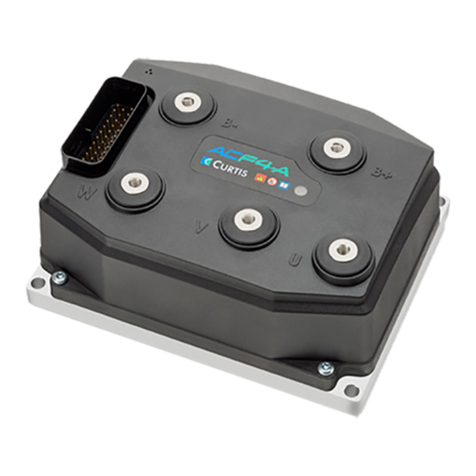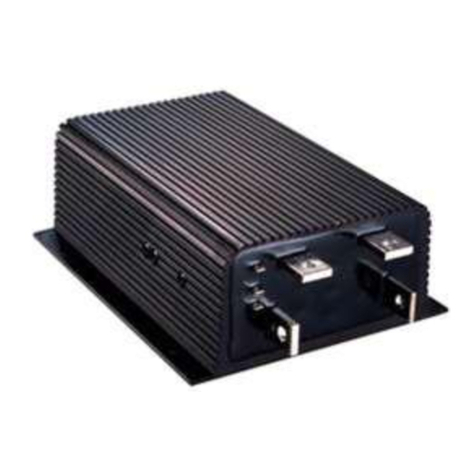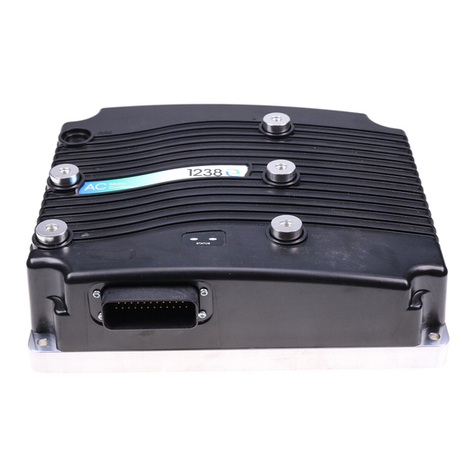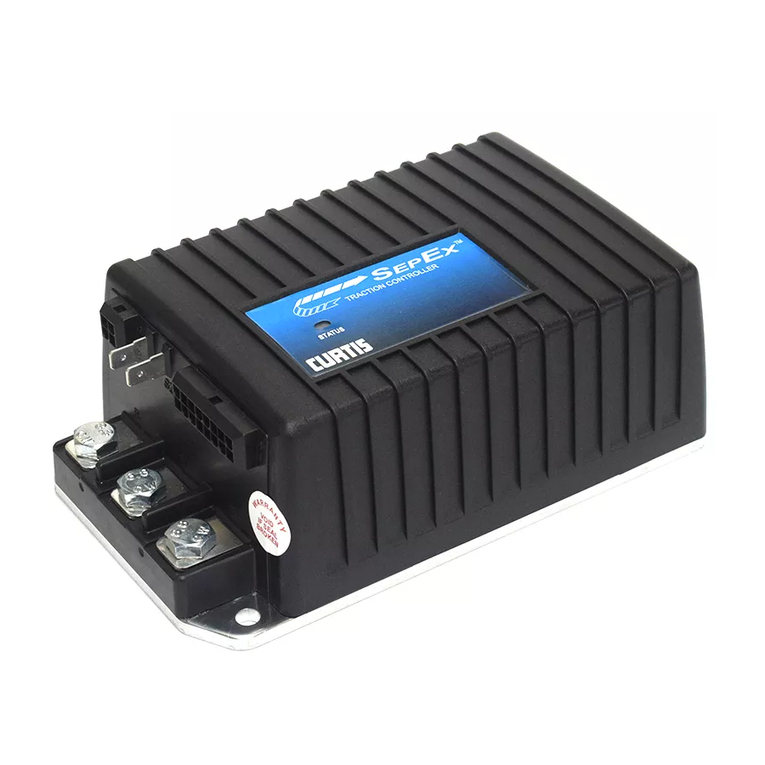
1 — OVERVIEW
1212 & 1212P Manual - Sep 2019 Return to TOC
pg. 2
• e vehicle is brought to a complete stop before the electromagnetic brake is applied, ensuring
safe and secure stops under all conditions
• Charger inhibit input prevents driving while charger is attached
• Key O Decel function ensures a smooth “brake to stop” when the key is turned o while
driving or when a fault occurs that requires the vehicle to stop
• Anti-Rollback/Roll-forward function provides smooth and safe vehicle control on hills and
ramps
• Internal main relay provides secure power-o
• Boost current gives a brief boost of current greatly improving transient loads such as starting
on a hill, crossing thresholds, etc.
Easy Installation and Setup
• Industry standard footprint, mounting centers, and wiring allows drop-in replacement of
other controllers
• 1212 and 1212P controllers are easily programmed with a Curtis programming device, or can
be supplied pre-programmed
• Accepts all standard throttle types, including single-ended, wigwag, and unipolar
• Simplified troubleshooting and diagnostics
• Standard Mini-Fit Molex Jr. and Faston terminals provide proven, robust wiring connections
Valuable Additional Features
• Optional Push Switch input releases the brake and allows the motor to free-wheel (1212
models only)
• Push-Too-Fast feature restricts the vehicle’s speed while it is being pushed, even with the key
o or the batteries disconnected
• Automatic compensation for changes in motor condition to ensure optimum drive
preformance at all times
• Multi-mode provides for two distinct and programmable control modes (indoor/outdoor)
• Power Saver function prevents the controller draining the battery when the vehicle is inactive
• Battery Discharge Indicator output
• Optional Speed Inhibit input oers exibility to reduce speed or prevent drive under certain
conditions, such as when the seat is lied
• Adjustable brake hold voltage reduces heating of the brake coil
• Reverse Beeper function alerts bystanders
• Electronics sealed to IP54
































